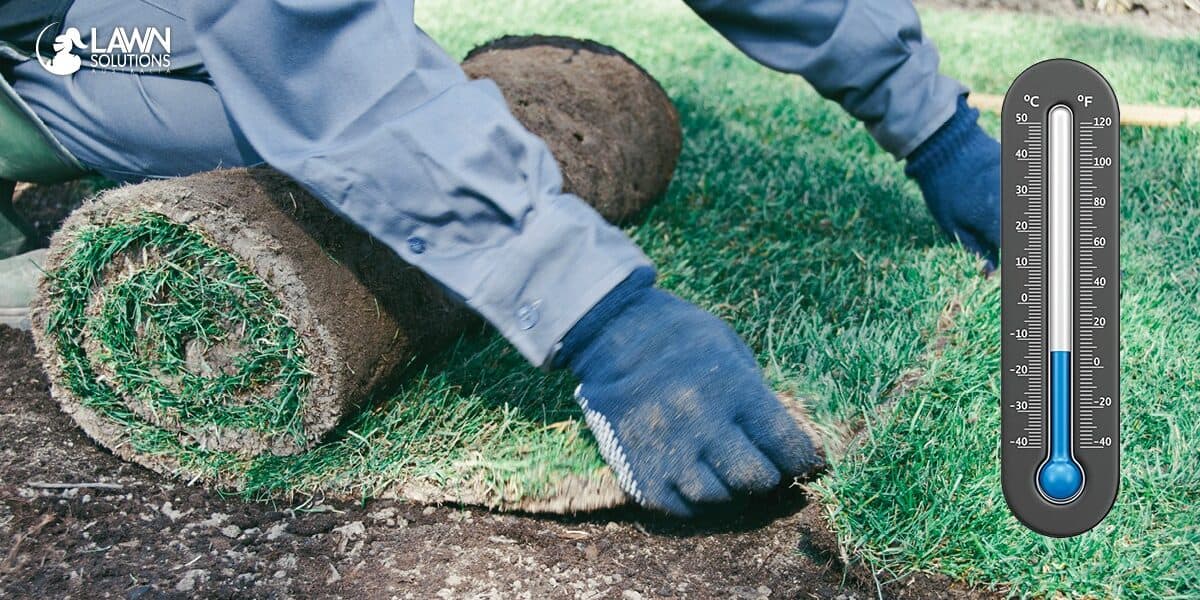Laying Turf in Winter: Essential Tips for a Healthy Lawn
When it comes to laying turf winter might not be the first season that comes to mind, but there are actually several advantages to installing your new lawn during these cooler months.
In this blog post, we will delve into the benefits of laying turf in winter and discuss the best times for installation.
We’ll also explore suitable grass types for colder climates and emphasise the importance of proper winter lawn care. Additionally, we’ll provide insight on temperature requirements when installing turf so you can ensure a healthy lawn year-round.
Advantages of Laying Turf in Winter
Don’t let the winter blues stop you from installing new turf – there are plenty of benefits to doing it during the colder months.
Less Watering Required
Save time and money on watering costs with decreased evaporation rates during winter.
Fewer Weeds
Winter means less sunlight and cooler temperatures, resulting in fewer weeds competing with your new turf.
Easier Scheduling for Contractors
- Better availability: Off-peak season means more availability for contractors.
- Potential discounts: Some contractors may offer discounted rates during winter.
- Faster completion times: Fewer projects means quicker completion times.
Dormant Grass Growth Allows For Better Root Establishment
Winter’s dormant grass growth allows for more effective root establishment without competing with top growth.
Improved Soil Conditions
Winter’s lower evaporation rates lead to improved soil conditions, providing the best possible start for your new turf.
So don’t let the winter chill hold you back – lay that turf and enjoy a beautiful lawn come spring.
Best Times to Lay Turf in Winter
Winter turf laying can be advantageous, but timing is key for a healthy lawn come springtime.
Avoid Frosty Conditions
Avoid laying turf when there is frost on the ground or if temperatures are expected to drop below freezing within 48 hours of installation.
Mild Days Are Ideal
The ideal time to lay turf in winter is when temperatures range between 10°C – 15°C, as frosty conditions or freezing temperatures within 48 hours of installation should be avoided.
- Early Morning: Laying turf early in the morning allows it ample time throughout daylight hours to settle into its new environment before night-time temperature drops occur.
- Late Afternoon: Installing late afternoon also works well as long as enough sunlight remains available for photosynthesis while avoiding direct exposure during peak sun intensity periods which could cause dehydration issues with newly laid sods.
Rainy Weather Considerations
Light rain provides much-needed moisture that aids root establishment. However a heavy downpour may lead to waterlogged soil that suffocates plant roots by depriving them of oxygen.
Preparation Is Key
Properly preparing the soil before laying turf in winter is crucial for success.
Suitable Grass Types for Winter Climate
Choosing the right grass type is crucial for a thriving lawn during winter months in Australia’s diverse climate.
- Kikuyu: Rapid growth and high wear tolerance make Kikuyu a top pick for winter turf.
- Buffalo: Adaptable to various soil types and cold weather conditions, Buffalo creates a lush green lawn all year round.
- Zoysia: Drought-resistant and low maintenance, Zoysia is perfect for dry winters or water restrictions.
- Tiftuf Bermuda Hybrid: First turf with a Smart Approved Water Mark. Drought resistant and fast recovery. Keeps its colour well in Winter.
Consider factors like sunlight, soil type, and water availability before choosing a grass type. Grech’s Turf offers a wide range of turf varieties suitable for different climates and conditions.
Remember, even winter-hardy grass types require proper care, like regular mowing, fertilising, and avoiding excessive foot traffic on frost-covered lawns.
Importance of Winter Lawn Care
Maintaining a healthy lawn during winter is crucial for its overall appearance and longevity.
Proper winter lawn care practices ensure that your turf remains strong, vibrant, and ready to thrive once the warmer months arrive.
Here are some do’s and don’ts to help you keep your lawn in top shape throughout the colder season:
Do’s:
- Fertilise: Give your grass a slow-release fertiliser before winter to promote root growth and strengthen the turf against cold temperatures.
- Mow correctly: Keep mowing your lawn, but raise the mower’s cutting height slightly to prevent scalping or damaging the grass crowns.
- Aerate: Improve air circulation around grassroots and allow water penetration into deeper layers of soil by aerating before winter sets in fully.
- Rake leaves: Clear any fallen leaves from your yard regularly so they don’t smother or suffocate underlying grass blades.
Don’ts:
- Avoid excessive foot traffic: Minimise walking on frozen lawns as this can damage delicate grassroots structures beneath ice layers.
- Don’t overwater: Water only when necessary, based on local weather conditions to avoid shallow root systems and increased susceptibility to diseases.
- Delay repairs: Address any bare or damaged patches in your turf promptly by laying new sod before the ground freezes solidly.
Choosing a suitable grass type that can withstand colder climates is also essential (check out Grech’s Turf for various options).
By following proper winter lawn care practices and selecting the right turf variety, you’ll ensure a lush and healthy landscape all year round.
Temperature Requirements for Installing Turf
Don’t let winter weather ruin your plans for a beautiful lawn – just make sure you follow these temperature guidelines for successful turf installation.
Ideal Soil Temperature Range
The ideal soil temperature range for laying turf is between 10°C and 20°C (50°F – 68°F) to ensure quick and efficient root establishment.
Preparing Your Ground
Get your ground ready by removing debris and weeds, testing soil pH levels, loosening compacted soil, adding organic matter, and fertilising appropriately.
- Test soil pH levels: Use a soil test kit to determine if your grass type prefers specific pH ranges.
- Loosen compacted soil: Break up soil with a rototiller or garden fork to encourage healthy root growth.
- Add organic matter: Incorporate compost or other organic materials into the top layer of soil to improve its structure and nutrient content.
- Fertilise appropriately: Apply some Lawn Launcher prior to laying turf to ensure proper nutrient availability.
Monitoring and Adjusting Temperature Conditions
Monitor temperature conditions closely and use a winter lawn blanket or cover to protect your new turf from frost damage if necessary.
Delay laying turf if extreme weather events, such as heavy frosts as this may impact the success of your installation.
FAQs in Relation to Laying Turf Winter
Can You Lay Turf in Winter?
Yes, laying turf in winter is possible and can be advantageous due to the cooler temperatures and increased rainfall.
However, it’s essential to choose a suitable grass type for colder climates and provide proper care during establishment.
What Month is Best to Lay Turf?
The ideal time for laying turf varies depending on your location and climate.
Generally, spring (September-November) or autumn (March-May) are considered the best months as they offer moderate temperatures and adequate moisture levels.
How Long Does Turf Take to Root in Winter?
Turf typically takes longer to establish roots during winter due to lower soil temperatures.
It may require 4-6 weeks or more for complete rooting, depending on factors such as grass type, site preparation, watering frequency, and local climate conditions.
Conclusion
Winter turf laying has advantages like lower water requirements and fewer pests, and it’s best done during the dormant season of grass when it’s not actively growing.
For optimal growth, temperatures should be above freezing but below 30 degrees Celsius, and suitable grass types for winter climates include kikuyu, buffalo, and couch.
Winter lawn care is crucial for maintaining a healthy lawn throughout the year, so follow these guidelines and choose the right type of grass to achieve a lush green lawn by laying turf in winter.









